Logistics sits at the heart of every successful business, particularly for modern brands in fast-moving, high-growth environments. But here’s the truth: many avoid saying out loud that traditional logistics systems, even the more polished iterations of 3PL, are ill-equipped to handle the demands of today’s scaling companies.
Adaptive Growth Logistics (AGL) isn’t just an upgrade on 3PL; it’s a paradigm shift. At M&M Quality Solutions, we designed AGL to ask a completely different set of questions about how fulfillment should serve growth-driven brands. It’s not about doing old logistics better. It’s about a new way of thinking.
This article will break down what AGL is, how it works, and why it’s fundamentally different. We’ll also explore an origin story rooted in our desire to solve problems once and for all no quick fixes or compromises. Whether you’re a direct-to-consumer (DTC) pioneer, a retail player, or an operations-heavy Series A/B company, this insight-driven approach can redefine how you think about fulfillment.
The Pain Points of Legacy Logistics Systems
Before we explore what makes AGL a breakthrough, it’s important to understand the outdated assumptions about logistics that have held brands back.
The Traditional 3PL Model Efficient, but Limited
Third-party logistics providers (3PL) historically excel at one thing: streamlining simple operations. The classic 3PL model thrives in environments where uniformity reigns supreme. Pallets of products come in, pallets go out. Predictable. Consistent. Rigid.
However, modern businesses operate with more variables than a traditional 3PL can accommodate. Brands need logistics systems that adapt to complexity, unpredictability, and consumer-first workflows. Critical areas where 3PL shows cracks include:
- Multi-Channel Integration
Most 3PLs still struggle to juggle e-commerce, retail, and hybrid models efficiently. These silos lead to inefficiencies and fulfillment errors.
- Dynamic Inventories and SKUs
Traditional 3PL assumes that SKU counts and volumes are relatively stable. That’s a fatal flaw in the face of trending product updates, bundle strategies, and seasonal pivots.
- Speed Without Strategy
Consumers demand two-day delivery or faster. Traditional logistics players often chase this metric reactively rather than building systems that enable sustainable speed with precision.
What Sets Adaptive Growth Logistics (AGL) Apart?
At M&M Quality Solutions, we didn’t set out to just patch the holes in 3PL. We wanted to innovate a model from the ground up, one tailored to meet the pace, priorities, and pressures of high-growth, modern brands.
From predictable to dynamic.
From static solutions to adaptive systems.
From cost-centric logistics to growth-centric logistics.
AGL’s Origin Story
Brian McMaster, M&M’s CEO, has long championed an insight-led approach to logistics. Seeing firsthand how traditional providers failed to support brands scaling amid complexity, Brian spearheaded the creation of Adaptive Growth Logistics.
“Logistics isn’t just about moving products; it’s about enabling growth. To unlock that growth, we knew we needed to redesign the system, not retrofit it,” says McMaster.
Our solution was simple in concept but intricate in execution. AGL was designed to combine data-driven insights, operational flexibility, and built-in scalability, all with one guiding goal to make logistics work as an extension of your business strategy, not just its back end.
Key Differences Between AGL and Traditional 3PL
To truly understand the AGL advantage, contrast it directly with traditional 3PL systems:
| Aspect | Traditional 3PL | Adaptive Growth Logistics (AGL) |
| Core Function | Bulk inventory management | Enabling seamless growth and flexibility |
| Approach to SKUs | Static and rigid SKU handling | Dynamic systems that accommodate fluid SKUs |
| Omnichannel Strategy | Minimal integration between channels | Holistic optimization across DTC, retail, and hybrid models |
| Technology | Legacy systems | Automation, predictive analytics, and real-time insights |
| Scalability | Struggles to adapt as brands grow | Built to scale with every stage of growth |
With AGL, it’s not just logistics; it’s logistics designed for a future-proofed business.
Designed for Modern Distribution Realities
What makes AGL so transformational is its ability to address the specific needs of fast-moving, high-stakes industries. Here are some of the core pillars that set it apart:
1. Fast and Flexible
Fast shipping isn’t optional anymore, it’s the expectation. But speed without flexibility won’t get you far when trends shift overnight or buyer habits deviate from the norm.
AGL combines tech-powered efficiencies with operational elasticity, ensuring that shifts in demand, new opportunities, or surprises in supply chains are seamlessly managed.
Example:
A cosmetics brand launching a seasonal product line can instantly adjust AGL’s workflows to meet increased demand and custom fulfillment needs with no downtime.
2. Insight-Driven Decision-Making
Data fuels AGL at every decision point. From real-time inventory visibility to channel-specific fulfillment strategies, AGL helps leaders make smarter moves.
Gone are the days of relying on incomplete or outdated data to guide logistics decisions. AGL’s built-in analytics dashboards empower growth-grounded choices.
3. Omnichannel Precision
Unlike traditional systems that allow inefficiencies to stack up across channels, AGL bridges the gaps. Whether it’s meeting wholesale requirements for retail or tailoring DTC deliveries to consumer preferences, AGL balances precision with scale.
4. Built-In Scalability
With brands that rapidly scale, logistics often becomes a bottleneck. AGL flips the script by ensuring that logistics grows with you, not against you.
AGL doesn’t just handle volume increases; it evolves with your business as you explore new markets, products, and distribution strategies.
Who Is AGL For?
AGL isn’t a one-size-fits-all solution; it’s for businesses with ambitious goals and operational complexities.
DTC + Retail Hybrid Brands
Brands that thrive in the DTC space while navigating retail partnerships know how critical fluid logistics is to trust, execution, and growth. AGL integrates seamlessly across these modes.
Series A/B+ Companies
High-growth startups and companies with venture backing face huge pressure to deliver results fast. AGL ensures that operational challenges don’t cut into that momentum.
Operations-Heavy Organizations
Industries needing precise, multi-layered workflows like fashion, healthcare, or subscription-based services will find that AGL delivers clarity, consistency, and operational peace of mind.
Moving From Legacy Systems to Next-Gen Fulfillment
The logistics landscape doesn’t need tweaks; it needs transformations. Adaptive Growth Logistics provides a scalable fulfillment model that empowers brands to thrive in today’s competitive climate.
If your business has been wrestling with the limitations of traditional 3PL or even trying to make the most of its variations, it’s time to explore a different approach. AGL was designed with your growth in mind, flipping logistics from a necessary cost center to a strategic growth partner.
From stuck to scalable.
From rigid to responsive.
From standard logistics to Adaptive Growth Logistics.
The Final Word
Adaptive Growth Logistics isn’t just the next step in logistics. It’s a complete redefinition, one centered on growth-driven, fast, and flexible execution.
If you’re ready to move beyond legacy fulfillment models and take your brand forward, it’s time to see what AGL can do for you.


